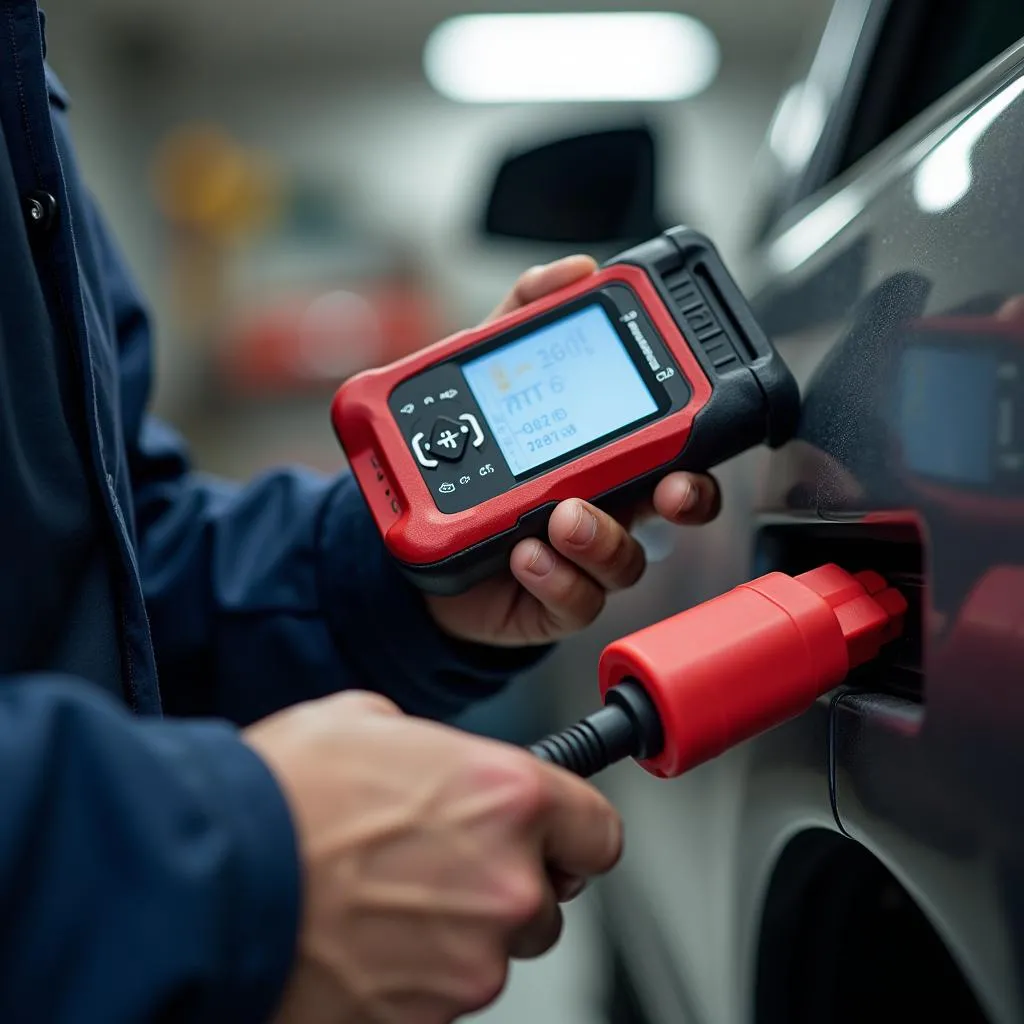Imagine this: you’re cruising down the Pacific Coast Highway, California, the sun warming your face, and suddenly, your engine starts sputtering. The “check engine” light flashes ominously. Your heart sinks. What do you do?
For many drivers, this scenario evokes dread and uncertainty. But, for a skilled auto mechanic armed with an OBDII scan tool, it’s just another day at the office. These powerful devices are like X-ray machines for your car, revealing hidden issues and providing a roadmap for repairs.
What Makes OBDII Scan Tools Indispensable?
Let’s unpack the importance of OBDII scan tools from different perspectives:
The Auto Mechanic’s Viewpoint:
“These tools are my lifelines,” says Michael Johnson, a seasoned mechanic at a bustling Chicago repair shop. “They cut down diagnostic time drastically. Instead of poking around blindly, I can pinpoint the faulty sensor or module in minutes.”  Mechanic using OBD2 scanner
Mechanic using OBD2 scanner
The Technical Angle:
OBDII stands for On-Board Diagnostics, generation two. Since 1996, most cars sold in the US and Europe have been equipped with this standardized system. The beauty of OBDII lies in its universal language. No matter the make or model, the scan tool can communicate with your car’s computer, retrieving diagnostic trouble codes (DTCs) that pinpoint the problem area.
The Economic Impact:
Early detection through OBDII scanning can save you from costly repairs down the line. A small issue like a loose gas cap, if ignored, can lead to significant damage to the catalytic converter, a hefty expense.
Demystifying OBDII Scan Tools
Types of OBDII Scan Tools:
- Basic Code Readers: These affordable devices primarily read and clear DTCs, perfect for DIY enthusiasts.
- Professional-Grade Scan Tools: Used by mechanics, these offer advanced features like live data streaming, actuator tests, and module programming.
How to Use an OBDII Scan Tool:
- Locate the OBDII port (usually under the dashboard on the driver’s side).
- Plug in the scan tool.
- Turn the ignition on (don’t start the engine).
- Follow the on-screen prompts to read and interpret codes.
Addressing Common Concerns
“Are OBDII Scan Tools Difficult to Use?”
Not at all! Many basic models are incredibly user-friendly. However, professional-grade tools require some technical expertise.
“Can I Trust the Information from an OBDII Scan Tool?”
While these tools are powerful, they are not foolproof. Sometimes, a code might point to a symptom rather than the root cause. Consulting a qualified mechanic is always recommended.  Car diagnostics expert
Car diagnostics expert
Exploring Related Questions
- “What are the most common OBDII codes?”
- “Can I use an OBDII scan tool on my motorcycle?”
- “How often should I scan my car for codes?”
For answers to these questions and more, explore our other informative articles on DiagXCar!
Need Assistance with Diagnostic Tools?
We’re here to help! Our team of auto experts is available 24/7 to assist you with any questions related to diagnostic tools and software installation. Contact us via WhatsApp at +84767531508 for personalized support.
Empowering Drivers Through Knowledge
OBDII scan tools have revolutionized car maintenance, providing both car owners and mechanics with a powerful tool for understanding and addressing vehicle issues. By empowering yourself with knowledge and the right tools, you can navigate the road of car ownership with greater confidence.


